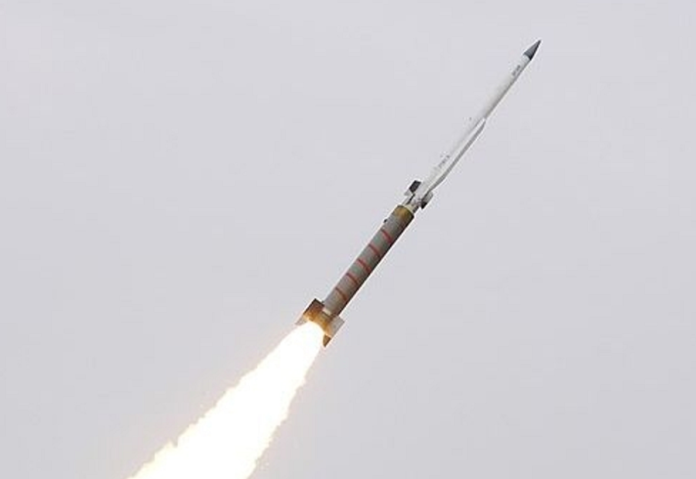The defense Research and Development Organisation (DRDO) achieved yet another technical feat on Friday when it successfully completed the last phase of testing of the missile system based on solid fuel ducted ramjet (SFDR) propulsion from a defense station off the coast of Odisha.
At the integrated test range’s (ITR) launching complex-III, the locally created missile system was tested from a static launcher. In less than a month, this was the third successful flight utilizing three distinct missile classes with in-house technologies.
According to defense sources, the SFDR-powered missile fulfilled all mission requirements, confirming the sophisticated propulsion system and a number of other crucial elements. The missile precisely destroyed the airborne target while traveling at a speed more than Mach 3 (three times the speed of sound) along its targeted trajectory.
“The data captured by a number of range instruments including telemetry, radar and electro optical tracking systems has confirmed its performance. This could be the last developmental trial of the system as the flawless mission indicates that the system is ready for induction,” said a defence official.
According to reports, India is the first nation to create this state-of-the-art SFDR technology, which will aid in the development of long-range air-to-air missiles that can destroy swiftly moving aerial targets at a distance of more than 300 kilometers at supersonic speed.
The Defence Research and Development Laboratory (DRDL), Hyderabad, worked with other DRDO facilities, including the High Energy Materials Research Laboratory (HEMRL), Pune, and the Research Centre Imarat (RCI), Hyderabad, to create the SFDR.
With its nozzle-less booster, thrust modulation system, and sophisticated propulsion system, the missile is specially engineered to produce a particular impulse in ramjet mode.
“The SFDR-based missile is usually boosted into a high-altitude trajectory to simulate aircraft-launch conditions and then the nozzle-less booster guides the weapon towards its target. The system utilises a solid fuelled air-breathing ramjet engine, which takes up oxygen from the atmosphere during flight,” said the official.
G Satheesh Reddy, the former chairman of the DRDO, told TNIE last month that SFDR will help the nation build long-range air-to-air missiles. He had stated that India will be the first nation to have such a capacity if it was completely developed.
India successfully tested its first long-range hypersonic missile on November 16 that could kill targets 1,500 kilometers distant. On November 27, the INS Arighaat submarine conducted a successful flight test of the K-4 missile, which has a range of 3,500 kilometers.
Also read: Viksit Workforce for a Viksit Bharat
Do Follow: The Mainstream formerly known as CIO News LinkedIn Account | The Mainstream formerly known as CIO News Facebook | The Mainstream formerly known as CIO News Youtube | The Mainstream formerly known as CIO News Twitter
About us:
The Mainstream formerly known as CIO News is the premier platform dedicated to delivering the latest news, updates, and insights from the CIO industry. As a trusted source in the technology and IT sector, we provide a comprehensive resource for executives and professionals seeking to stay informed and ahead of the curve. With a focus on cutting-edge developments and trends, The Mainstream formerly known as CIO News serves as your go-to destination for staying abreast of the rapidly evolving landscape of technology and IT. Founded in June 2020, The Mainstream formerly known as CIO News has rapidly evolved with ambitious growth plans to expand globally, targeting markets in the Middle East & Africa, ASEAN, USA, and the UK






